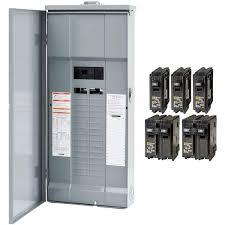In planning exterior power systems, choosing the right enclosure early reduces failures and service calls, which is why a properly specified Outdoor Electrical Distribution Panel placed where moisture, dirt, and impact are minimized can extend equipment life and improve safety; selecting the correct Outdoor Electrical Distribution Panel during design also simplifies wiring, allows future additions, and clarifies maintenance procedures for technicians working in exposed conditions. This article explains material selection, protective ratings, installer-friendly details, siting and mounting best practices, and how to plan panels that remain reliable as systems evolve.
Materials and Longevity Considerations
Material choice determines how a distribution panel performs over time. UV-stable thermoplastics resist embrittlement and discoloration under sunlight, while powder-coated aluminum or stainless steel provide enhanced mechanical strength and corrosion resistance for industrial or coastal sites. Pay attention to the grade of fasteners, hinges, and internal rails—marine-grade stainless hardware prevents early failures at mounting points. Gasket materials such as EPDM or silicone preserve elasticity across temperature swings, maintaining the sealing plane through frequent opening and servicing. Select finishes and paints that resist salt spray and chemical exposure in aggressive atmospheres.
Protection Ratings and Impact Resistance
Objective ratings help match a panel to site conditions. Ingress Protection (IP) ratings indicate resistance to dust and water; IP65 is a practical baseline for many outdoor installations, while IP66 or IP67 are appropriate where heavy spray or temporary submersion might occur. IK impact ratings quantify mechanical resistance—use higher IK values in public or vandal-prone areas. When specifying products, request independent test reports and understand the exact test conditions so field teams share realistic expectations for performance during extreme events.
Installer-Friendly Design Features (Nante Product Focus)
Design details significantly affect installation time and long-term serviceability. Look for removable mounting plates, captive screws that stay attached to covers, and multiple pre-cut cable entry knockouts or integrated gland plates for tidy cable management. DIN-rail options, labeled mounting positions, and adjustable bosses simplify wiring and future retrofits. Thoughtful hinges and tamper-resistant fasteners help preserve gasket seals during maintenance. Accessory kits—spare gaskets, strain-relief clamps, and mounting brackets—speed repairs and reduce downtime in the field.
Siting, Mounting, and Thermal Management
Where and how a panel is mounted matters as much as its construction. Mount on rigid, vibration-free surfaces and orient cable entries to discourage runoff pooling at seals. Use correctly sized cable glands and strain reliefs to protect conductors from fatigue. Avoid over-tightening screws, which can deform gaskets and compromise sealing. Thermal planning is critical for panels that house heat-generating devices: consider heat-dissipating mounting plates, internal spacing, or filtered passive vents. If active cooling is necessary, choose solutions that preserve the enclosure’s protective rating and resist contaminant ingress.
Future-Proofing, Modularity, and Applications
Outdoor distribution panels serve many roles—site temporary distribution, landscape and pool equipment, solar combiner or inverter junctions, EV-charge point peripherals, and small motor control centers. Anticipate future needs by specifying modular interiors, spare DIN-rail space, and standardized mounting footprints so surge protection, communications gateways, or sensors can be added without an enclosure swap. Modular designs reduce lifecycle costs and simplify spare-part logistics, enabling faster service and upgrades as technology or loads change.
Maintenance, Inspection, and Lifecycle Planning
Routine inspection preserves panel value. Establish a maintenance schedule to check gasket condition, fastener torque, and signs of ingress after severe weather. Replace compressed gaskets and corroded hardware promptly to maintain the sealing plane. Keep a small inventory of spare seals and fasteners on site for speedy repairs. When replacing parts, use manufacturer-specified components to retain certified protection levels. Document maintenance actions and review failure modes to refine future specifications and siting decisions.
Choosing the right outdoor distribution panel is a systems decision: balance environmental exposure, thermal load, installation reality, and future adaptability. Prioritize proven materials, verified IP/IK ratings, and practical installer-focused features to minimize downtime and maintenance costs. For detailed product specifications, certified test data, and configurable Outdoor Electrical Distribution Panel options, visit www.nante.com/product/



